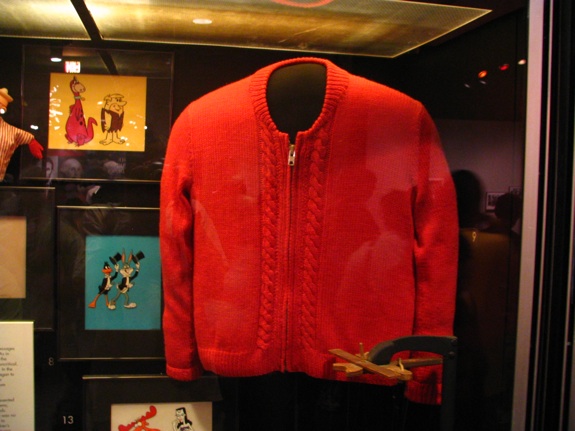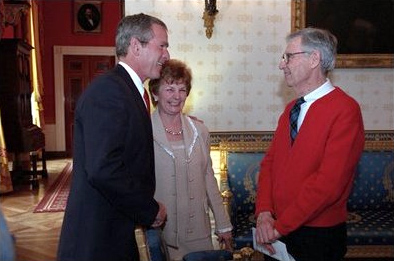The Indelible Mister Rogers
Besides how to be a good neighbor, Mr. Rogers taught us other lessons, especially about the impact of a comforting change of clothes
Mr. Rogers’ cardigan at the National Museum of American History
However you feel about the Mister Rogers Remixed video that’s gone viral over the past few weeks, one thing is certain (which was certainly reinforced by the popularity of that video): Mr. Rogers has had a lasting, positive and calming effect on millions of children and adults since his show, “Mister Rogers’ Neighborhood,” first aired in the U.S. in 1968. How many of us can recite every word to “It’s a Beautiful Day in the Neighborhood” on command like we’d just heard it yesterday?
So to discover that one of Fred Rogers’ many cardigans had been donated to the Smithsonian’s permanent collection for safekeeping is to find myself in a moment of inescapable nostalgia about this great, understated man. And yes, Mr. Rogers did manage to be great and understated. No mean feat, unless you slowly change into a cardigan every day for 33 years and leave an indelible mark on children and adults alike.
In case you’ve forgotten (although that seems virtually impossible!), every episode of the show began with Mr. Rogers entering his house from some invisible outside world and singing “Won’t you be my neighbor?” as he took off his sport coat, hung it up in his hall closet, and reached back in for one of his many trademark cardigans, zipping it up and then sitting down to swap out his classic oxfords for sneakers, singing all the while. Ingrained in our collective memories (and in various iterations on YouTube), that is how the show began for the more than three decades it was on the air.
Even if we were too young to realize it and really couldn’t have cared less, Mr. Rogers’ cardigan – and his casual uniform we grew so accustomed to seeing – taught us about clothing. Yes, there are the innumerable and literal trends that have been derived from his signature, and very identifiable look – from versions in hipster-chic Urban Outfitters to preppy Ralph Lauren. But that’s not what I’m referring to. What did his daily routine, catchy ditty and ritual of transforming out of his stiffer outerwear and into more comfortable loungewear teach us, as children, that we may have unknowingly taken into our adult lives? Perhaps that a simple change of clothes can help us shake off the stresses of the world. That slipping into some dependable and relatively unremarkable clothes after a long day at work is like hitting a refresh button where we can transition into a more calm state of mind. That a wardrobe change allows us to tap into creative impulses we might have gotten stuck only associating with the simplicity of childhood.
Before going too far into the land of make believe, how about a few fun facts and an image? First the facts: Did you know that Mr. Rogers’ mother, Nancy, hand-knit each and every one of those sweaters the color-blind host pulled out from his closet every day?
And this image: The Presbyterian minister-turned-TV-host is wearing his red cardigan to meet then-President George W. Bush at the White House. Yes, this a few decades after he testified in front of Congress.
I like to think that Mr. Rogers’ daily costume change inadvertently made us think about how he managed to be great while so understated—and how we try to live up to his standards. His deliberate routine, which ordinarily could have been accomplished in under a minute, may have prompted us to slow down or be more thoughtful about how we interact with the people and things in our lives. Maybe it’s wishful thinking in this fast-fashion, fast-food, fast-paced world we live in, but I bet that years of watching Mr. Rogers made his dedicated viewers understand there’s no need to be fast or flashy to make a deep impression.
/https://tf-cmsv2-smithsonianmag-media.s3.amazonaws.com/accounts/headshot/emily-spivack-240.jpg)


/https://tf-cmsv2-smithsonianmag-media.s3.amazonaws.com/accounts/headshot/emily-spivack-240.jpg)